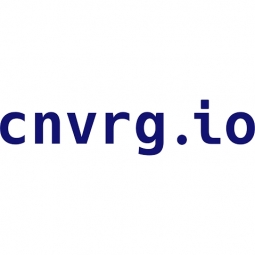技术
- 基础设施即服务 (IaaS) - 混合云
- 平台即服务 (PaaS) - 应用开发平台
适用行业
- 水泥
- 建筑与基础设施
用例
- 施工管理
- 基础设施检查
服务
- 云规划/设计/实施服务
- 数据科学服务
关于客户
Wargaming 是一家屡获殊荣的在线游戏开发商和发行商,也是免费 MMO 市场的领导者之一。该公司跨 PC、游戏机和移动平台提供真实的游戏体验和服务。 Wargaming 拥有全球超过 1.1 亿玩家、超过 15 款游戏和近 2PB 的数据,成功扩展了人工智能,在过去几年中推动了指数级增长。他们的数据科学和工程团队目前有 1,500 多个模型在生产中运行,这些模型可提供动态的游戏体验、提高支持效率并提供先进的报告系统来推动关键业务决策。
挑战
Wargaming 是一家屡获殊荣的在线游戏开发商和发行商,在跨业务部门扩展人工智能方面面临着重大挑战。该公司在全球拥有超过 1.1 亿玩家、超过 15 款游戏以及近 2PB 的数据,在单一服务器解决方案的生产环境中运行着 1,500 多个模型。这严重限制了基础设施并限制了数据科学家,因为由于每个核心的许可,添加服务器的间接成本非常高。现有平台还限制数据科学家只能使用该平台预先批准的语言和软件包。 Wargaming 需要一种能够支持生产中的大规模模型、扩展服务器、最大限度地降低管理成本并为数据科学家提供灵活性的解决方案。
解决方案
Wargaming 采用了现代 MLOps 自动化平台 cnvrg.io 来支持其大量生产模型。该平台在其产品、支持和业务报告部门之间提供了完全自动化的管道。与传统平台相比,cnvrg.io 提供了基于 Kubernetes 和云原生的现代基础设施,可以轻松与现有 IT 融合,并提供无限制增长的能力。 Wargaming 能够利用他们已有的强大机器,并轻松添加加速和强大的服务器以实现更好的性能。数据科学家能够通过直观的 UI 快速适应 cnvrg.io,这使他们能够灵活地使用自己喜欢的语言、添加自定义包以及使用其他开源功能。
运营影响
数量效益

Case Study missing?
Start adding your own!
Register with your work email and create a new case study profile for your business.
相关案例.

Case Study
System 800xA at Indian Cement Plants
Chettinad Cement recognized that further efficiencies could be achieved in its cement manufacturing process. It looked to investing in comprehensive operational and control technologies to manage and derive productivity and energy efficiency gains from the assets on Line 2, their second plant in India.

Case Study
IoT System for Tunnel Construction
The Zenitaka Corporation ('Zenitaka') has two major business areas: its architectural business focuses on structures such as government buildings, office buildings, and commercial facilities, while its civil engineering business is targeted at structures such as tunnels, bridges and dams. Within these areas, there presented two issues that have always persisted in regard to the construction of mountain tunnels. These issues are 'improving safety" and "reducing energy consumption". Mountain tunnels construction requires a massive amount of electricity. This is because there are many kinds of electrical equipment being used day and night, including construction machinery, construction lighting, and ventilating fan. Despite this, the amount of power consumption is generally not tightly managed. In many cases, the exact amount of power consumption is only ascertained when the bill from the power company becomes available. Sometimes, corporations install demand-monitoring equipment to help curb the maximum power demanded. However, even in these cases, the devices only allow the total volume of power consumption to be ascertained, or they may issue warnings to prevent the contracted volume of power from being exceeded. In order to tackle the issue of reducing power consumption, it was first necessary to obtain an accurate breakdown of how much power was being used in each particular area. In other words, we needed to be able to visualize the amount of power being consumed. Safety, was also not being managed very rigorously. Even now, tunnel construction sites often use a 'name label' system for managing entry into the work site. Specifically, red labels with white reverse sides that bear the workers' names on both sides are displayed at the tunnel work site entrance. The workers themselves then flip the name label to the appropriate side when entering or exiting from the work site to indicate whether or not they are working inside the tunnel at any given time. If a worker forgets to flip his or her name label when entering or exiting from the tunnel, management cannot be performed effectively. In order to tackle the challenges mentioned above, Zenitaka decided to build a system that could improve the safety of tunnel construction as well as reduce the amount of power consumed. In other words, this new system would facilitate a clear picture of which workers were working in each location at the mountain tunnel construction site, as well as which processes were being carried out at those respective locations at any given time. The system would maintain the safety of all workers while also carefully controlling the electrical equipment to reduce unnecessary power consumption. Having decided on the concept, our next concern was whether there existed any kind of robust hardware that would not break down at the construction work site, that could move freely in response to changes in the working environment, and that could accurately detect workers and vehicles using radio frequency identification (RFID). Given that this system would involve many components that were new to Zenitaka, we decided to enlist the cooperation of E.I.Sol Co., Ltd. ('E.I.Sol') as our joint development partner, as they had provided us with a highly practical proposal.

Case Study
Splunk Partnership Ties Together Big Data & IoT Services
Splunk was faced with the need to meet emerging customer demands for interfacing IoT projects to its suite of services. The company required an IoT partner that would be able to easily and quickly integrate with its Splunk Enterprise platform, rather than allocating development resources and time to building out an IoT interface and application platform.

Case Study
Bridge monitoring in Hamburg Port
Kattwyk Bridge is used for both rail and road transport, and it has played an important role in the Port of Hamburg since 1973. However, the increasing pressure from traffic requires a monitoring solution. The goal of the project is to assess in real-time the bridge's status and dynamic responses to traffic and lift processes.

Case Study
Bellas Landscaping
Leading landscaping firm serving central Illinois streamlines operations with Samsara’s real-time fleet tracking solution: • 30+ vehicle fleet includes International Terrastar dump trucks and flatbeds, medium- and light-duty pickups from Ford and Chevrolet. Winter fleet includes of snow plows and salters.




